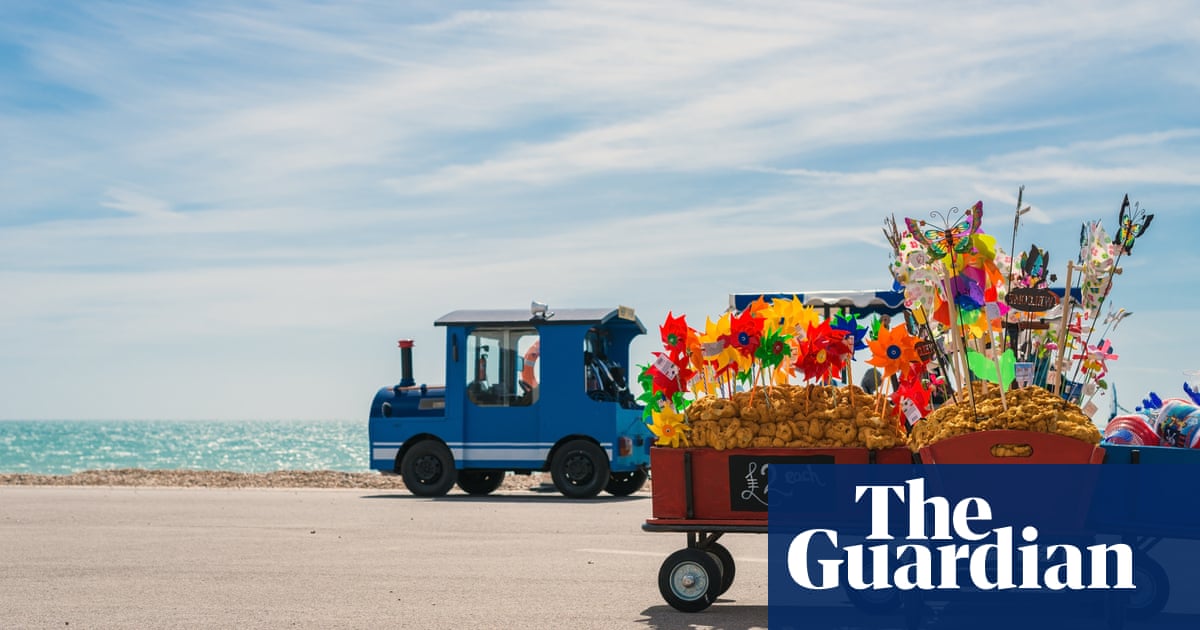Every summer, Which? magazine publishes a list of resorts – 126 this year – ranked according to hotel quality and prices, food and drink, attractions, shopping, scenery. The top slots are inevitably occupied by smaller, smarter places visited by the better-off, probably before or after a trip to France or Crete. The bottom, though, is far more interesting. After all, what are we to make of places built for consumption if there’s nothing worth buying besides fish and chips? What about the timeless qualities of the shore – the horizon, the tides, the big skies? Is the point of the seaside its ahistorical oddness – or can history rescue resorts that seem stranded, sinking or sad?
The following were all ranked in the bottom 10, or excluded altogether.
Fleetwood
The tram from Blackpool to Fleetwood is one of the most instructive journeys to be had on the English coast. The symbolism is huge, as you leave behind the neon, the rides, the three piers clutching at the sea and the tower and sail into an entirely different built environment – and a different idea.
The name of Fleetwood carries weight in these parts. It can be traced back to the 14th century, acquiring, through marriage, a connection to Swedish nobility in the 17th century. Local marriages linked the family to the Bolds, Aughtons and Heskeths. If the names mean nothing to you, consider that one little chap was christened Bold Fleetwood Hesketh in 1762 – in Lancashire, that’s like being called Windsor Tudor Stuart-Coutts-Mogg.
Predeceased by an older brother, Peter Hesketh inherited the family estate at Rossall Hall in 1824. He changed his name in 1831 by Royal Licence to Hesketh-Fleetwood, incorporating the better-known family name of his ancestors – and was later created Baronet Fleetwood.
As a student, young Peter holidayed on the south coast; at St Leonards-on-Sea, he befriended the architect Decimus Burton – who had built the East Sussex resort as well as some of London’s grandest terraces. Rossall in Lancashire was a desolate tract, overrun by rabbits and seabirds and, on occasion, the sea. Hesketh-Fleetwood deemed it a propitious time to cash in on two booms – day tripping and the railways – and develop a fashionable holiday resort. As there was no London-to-Scotland railway, the town’s port could be an embarkation point for steamers to the Clyde, Ireland and the Isle of Man. Several…
Click Here to Read the Full Original Article at Travel | The Guardian…
